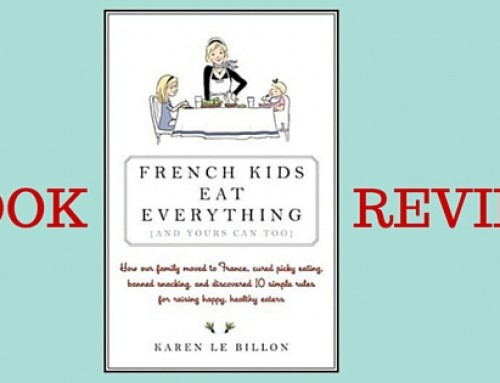You might have noticed that the subtitle of my website is Nourish and Love, as I believe that we have a responsibility towards our children to show them our love not only by nourishing their bodies, but also through other means.
Today I would like to tell you about a book called “The 5 love languages of children”. This book teaches us how to show our children that we love them so that they feel our love.
The authors of this book are:
– Gary Chapman, a relationship counselor and author of the “Love languages” series. He is the director of Marriage and Family Life Consultants, Inc. He also has a popular radio show and travels extensively to present his seminars.
and
– Ross Campbell received a medical degree from University of Florida and worked for several years as a psychiatrist. He counselled thousands of children and adults and wrote many successful books on relationships between parents and their children.
“The 5 love languages of children” is easy to read and very engaging. Reading the first 50 pages (and during the next ones until the end), I found myself tearing up several times.
In addition to print, the book is also available on CD, audible, and Kindle.
The book talks about the love languages that each child needs to have in their life in order to their emotional needs met. These 5 love languages are:
- Physical touch
- Words of affirmation
- Quality time
- Gifts
- Acts of service
There is a chapter dedicated to each love language and at the end of each chapter there is a table with multiple examples that we can apply to show our children each type of love language.
Many of us do not know the love language that our child speaks. Chapman and Campbell provide many examples that teach us how to “read” what love language(s) a child needs the most. Most of the time it is only one (primary love language), but sometimes one child has more. When our children are small, it is hard to decipher their love language, so we usually offer them all five languages. As they grow, we can learn from them (by observing what they usually ask of us) what their primary love language is. As they get even older, things get easier for us as the children can usually tell us what they need. There is a handy test at the end of the book that older children can fill out and their answers can be added to find out their primary love language.
However, the authors emphasize that our children need to receive from us all five types regularly. We need to fill their “love tank” all the time, and if it is empty, then the attachment between us and our children is lost and they will stop listening and communicating with us.
We make sure that our children are well fed, are well dressed, etc. But do we make sure that they are well loved? Even more, do we make sure that our children know and feel we love them?
I find this idea of filling our child’s love tank very powerful as my husband and I experienced how important this is with our son. My husband works a lot and I was spending most of my time with our two children. However, I recently took a full-time job for two months, so both kids started going every day to a great day home. This is when our son started not listening to us anymore, having temper tantrums, and acting out at preschool and at the day home. After several discussions, my husband and I reached the conclusion that what our son needed was my presence back into his life, so I scaled back my workload. We did not know if it would work. We just thought that my absence was something that changed in his life recently, so we tried to see if going back to our routine would fix the problem. And it did! In a couple of days, our son started behaving nicely and he was back to being the sweet (95% of the time J), little boy we knew.
I wish I would have read the book sooner to help us go through that tough time. However, reading the book validates the approach we took with our son and we are glad that we gave our son love and presence instead of further breaking the bond between us.
In addition to discussing the love languages, the book also talks about how to deal with an angry child, about love languages in single-parent families, and about love languages in marriages.
Gary Chapman previously wrote a book called “5 love languages” that explains how we, as adults, communicate through our five love languages and that we too, need our love tank full in order to establish meaningful and lasting relationships with our partners. In return, if our love tanks are full, then we are more able to fill up our children’s love tanks.
I believe that each parent should read this book. As probably most of us have read the “What to expect” series, we should add this one to our to-read list. Even if you are already doing what the book teaches us, reading this book will not only reinforce that what you do is right, but it will also motivate you to keep doing it.
We all love our children, but do they know this? Do you know your child’s primary love language? Do you try to keep their “love tank” full? Do you see any changes in their behaviour if their “love tank” is not full?







I just read your article about “The 5 Love Languages of Children”.
I could not agree more. What you experienced with your son when you went back to work full-time is exactly what I experienced all the time with the children in the daycare centre I was working for. Both parents are working and the kids are left alone with a great or not so great daycare teacher.
Usually the groups are full with many children who are needing all the love they can get but how can you do that if you are only one person to take care of them. And the children want the parents love and not a strangers love. So what most of the daycare children do is to try to get it by a negative behaviour (what you experienced with your son).
I mean I understand it is hard to live on only one income but maybe parents should rethink what is really important in life.
Everybody is focused on a higher lifestyle and what they can offer their children but the children are easy they want your love and time – that easy.
I don’t know how many times I tried to explain that to parents and how they can help but some of them just don’t understand or don’t want to understand.
I think that topic will be really hard to explain or to teach parents because our nowadays process of thinking is hard to change.
You have to really start with the government – Mothers or Fathers who are willing to stay home with their children should get paid and not the other way around where daycare centres and parents are getting helped with affordable daycare – wrong !
I could go on and on and on ;-), but really children are easy they want your love and time as parents and nothing else.
Hi, Petra, thank you for taking the time to write this comment!
If parents who stay at home with their children would get paid, that would solve many problems (including some behavioural issues) and children would get to enjoy more time with their parents and vice versa. Children want nothing more than seeing and playing with their parents.